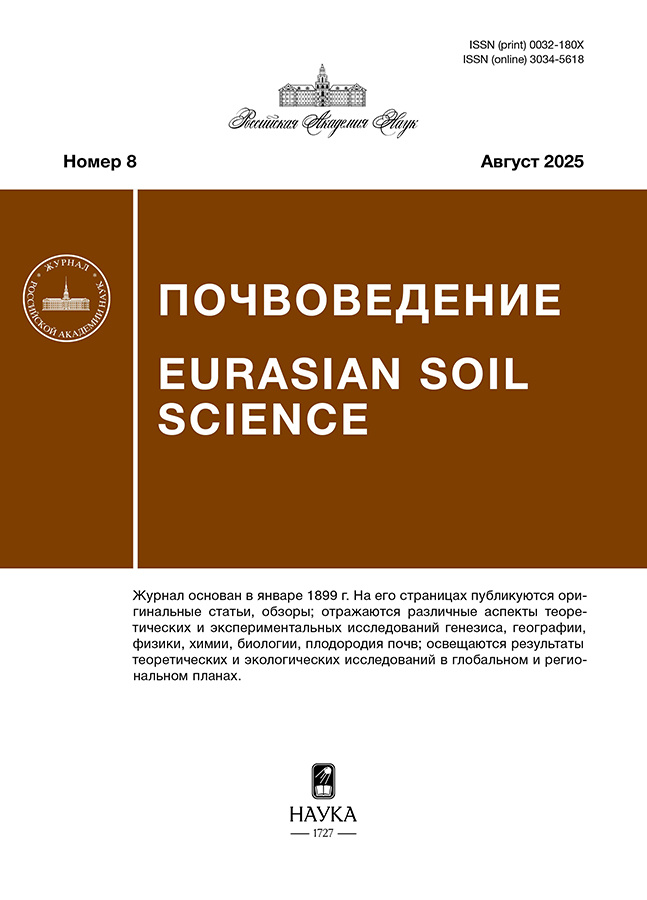Stable isotopic (δ13C) and micromorphological features of organic matter in soils of the Mondy basin (Eastern Sayan mountains)
- Autores: Golubtsov V.A.1, Cherkashina A.A.1, Bronnikova M.A.2
-
Afiliações:
- Sochava Institute of Geography, Siberian Branch of Russian Academy of Sciences
- bInstitute of Geography, Russian Academy of Sciences
- Edição: Nº 8 (2025)
- Páginas: 993-1007
- Seção: GENESIS AND GEOGRAPHY OF SOILS
- URL: https://pediatria.orscience.ru/0032-180X/article/view/688064
- DOI: https://doi.org/10.31857/S0032180X25080023
- EDN: https://elibrary.ru/INMCIQ
- ID: 688064
Citar
Texto integral
Resumo
New data are presented on the soils of the Mondy basin, most arid and cold basin of the Tunka branch, distinguished by contrasting environmental conditions and characterized by poorly studied soil cover. In order to assess the influence of the bioclimatic conditions of the basin on the dynamics of soil organic matter the structure of the organic profile was characterized, the organization of organic matter at the micromorphological level was assessed, and intra-profile variations in TOC and δ13C were determined for five soil sections formed under the most typical plant communities on similar parent material. The main components of the soil cover of the Mondy basin are pale and cryoarid soils as well as transitional soils that combine in their structure the features of taiga and steppe pedogenesis and reflect the dynamics of the landscape boundaries. Differences in the microstructure of the organoprofile horizons indicate greater productivity of phytocenoses and activity of biota participating in the processing of organic matter coming with litter in pale and cryoarid soils formed under the taiga, in comparison with steppe cryoarid soils. Differences in the organization and some features of the transformation of organic matter, discovered at the micro level, correlate well with the features of the intra-profile distribution of TOC and δ13C. The steppe soils of the Mondy basin, in comparison with the taiga soils, are characterized by increased slope of the linear regression between log-transformed Corg and δ13C by depth, indicating a low intensity of carbon turnover due to the low productivity of phytocenoses, low biological activity of cryoarid soils, slow transformation of plant residues in conditions of a dry vegetation season and a short period of optimal combination of temperatures and humidity. The middle horizons of the studied soils often contain a significant amount of organic matter in the micromass and pedofeatures (humus-clay and, to a lesser extent, carbonate cutans), which allows them to be considered as part of the organic profile.
Texto integral
Sobre autores
V. Golubtsov
Sochava Institute of Geography, Siberian Branch of Russian Academy of Sciences
Autor responsável pela correspondência
Email: tea_88@inbox.ru
Rússia, Irkutsk
A. Cherkashina
Sochava Institute of Geography, Siberian Branch of Russian Academy of Sciences
Email: tea_88@inbox.ru
Rússia, Irkutsk
M. Bronnikova
bInstitute of Geography, Russian Academy of Sciences
Email: tea_88@inbox.ru
Rússia, Moscow
Bibliografia
Arquivos suplementares














